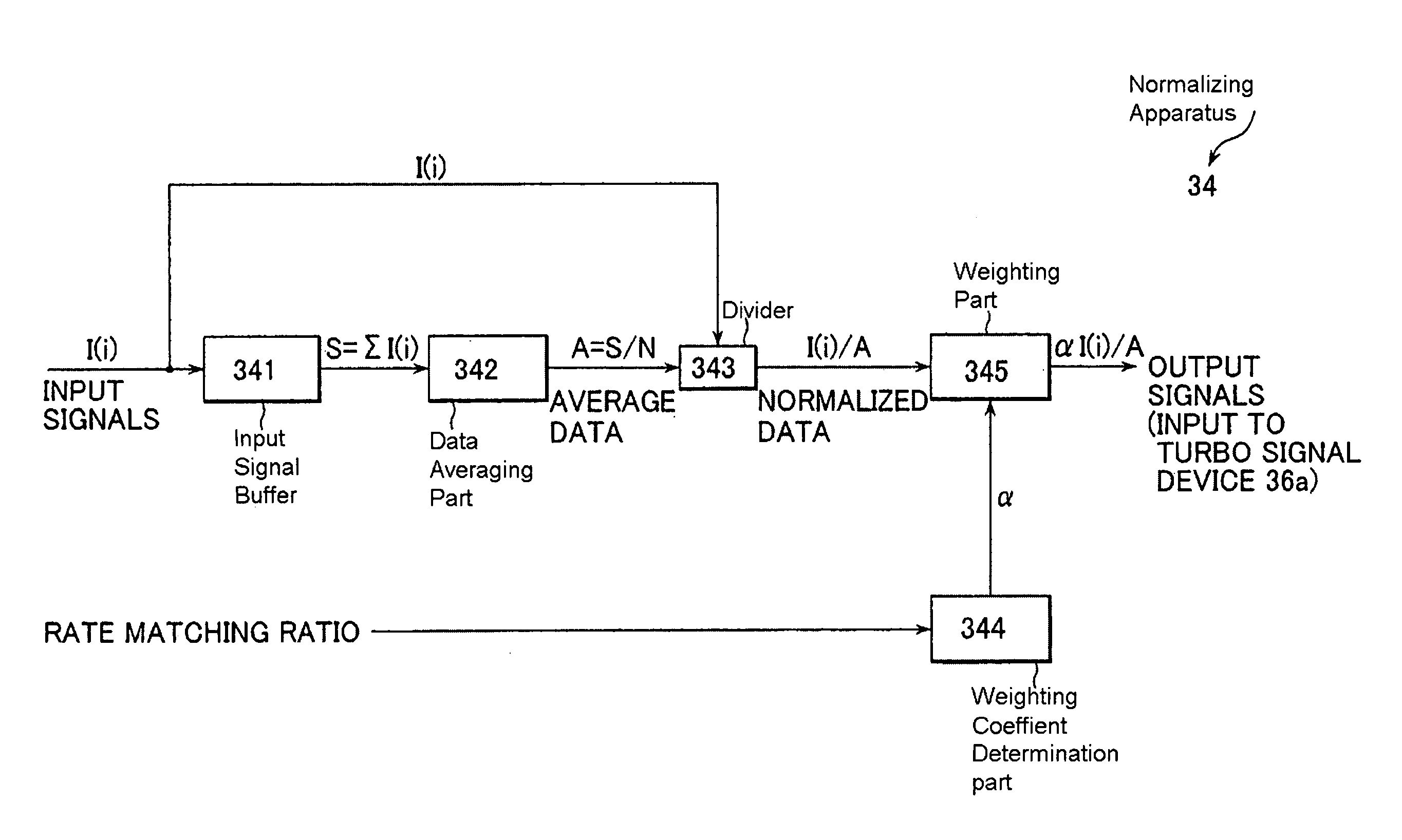Normalizing device and method, program, recording medium on which the program is recorded and communication terminal for normalizing data
- Summary
- Abstract
- Description
- Claims
- Application Information
AI Technical Summary
Benefits of technology
Problems solved by technology
Method used
Image
Examples
Embodiment Construction
[0023]An embodiment of the present invention will be described below by referring to diagrams.
[0024]FIG. 1 is a block diagram showing a transmitter apparatus 10 and a receiver apparatus 20 according to the embodiment of the present invention.
[0025]The transmitter apparatus 10 includes a turbo coding part 12, a rate matching part 14, and a transmitter part 16.
[0026]The turbo coding part 12 performs turbo coding on information signals that are to be transmitted to the receiver apparatus 20. The turbo coding is a method of coding, which was originally introduced in a reference “C. Berrou, A. Glavieux and G Montorsi: ‘Near Shannon Limit Error-Correcting Coding and Decoding: Turbo—Codes (1)’ Proc. of ICC '93 (Geveva, Switzerland), pp. 1064–1070.”FIG. 2 shows a construction of the turbo coding part 12.
[0027]The turbo coding part 12 includes coders 121, 122, an interleaving part 123, a switching part 124, and a parallel / serial converter part 125. The turbo coding will only be described bri...
PUM
 Login to View More
Login to View More Abstract
Description
Claims
Application Information
 Login to View More
Login to View More - R&D Engineer
- R&D Manager
- IP Professional
- Industry Leading Data Capabilities
- Powerful AI technology
- Patent DNA Extraction
Browse by: Latest US Patents, China's latest patents, Technical Efficacy Thesaurus, Application Domain, Technology Topic, Popular Technical Reports.
© 2024 PatSnap. All rights reserved.Legal|Privacy policy|Modern Slavery Act Transparency Statement|Sitemap|About US| Contact US: help@patsnap.com










